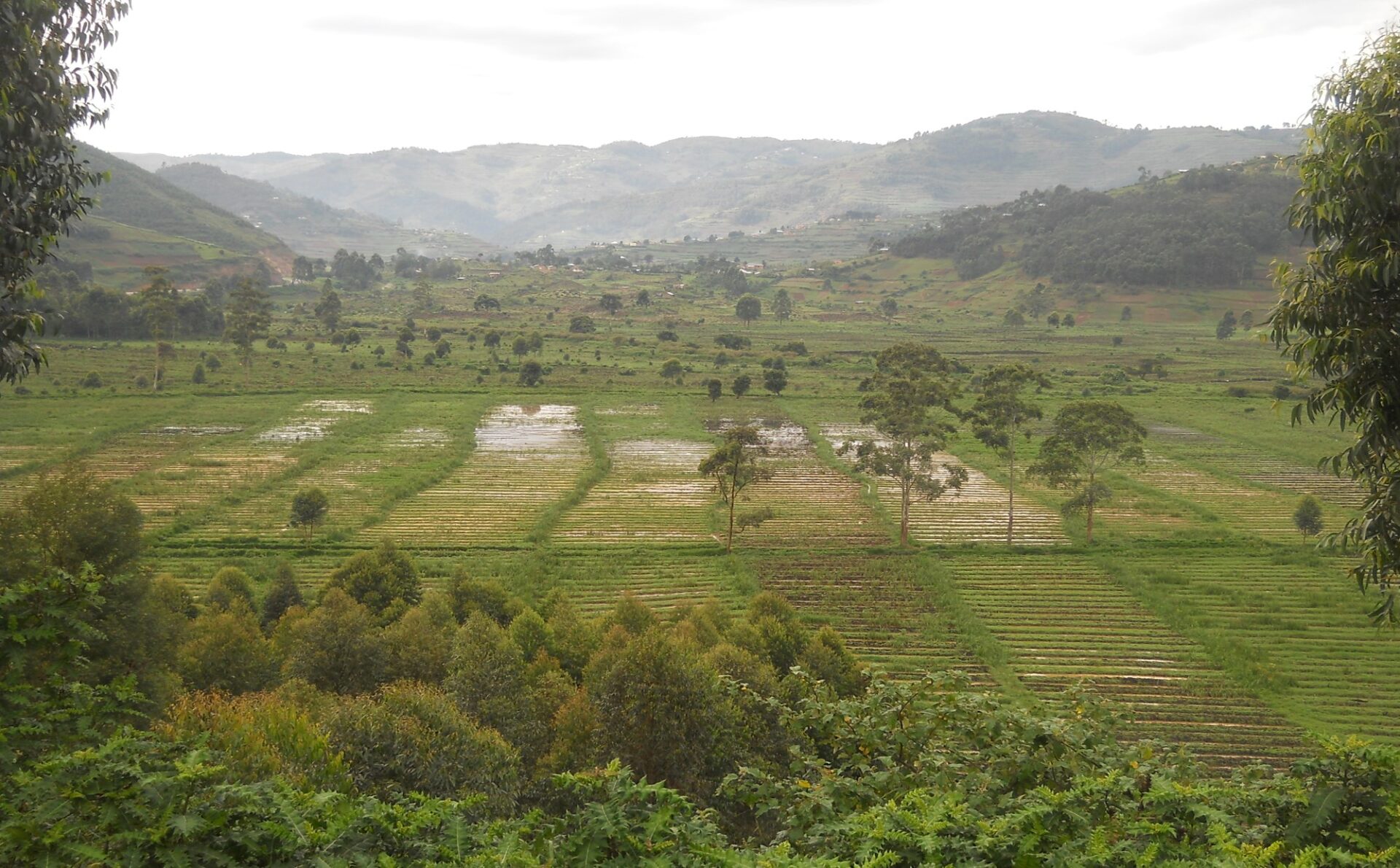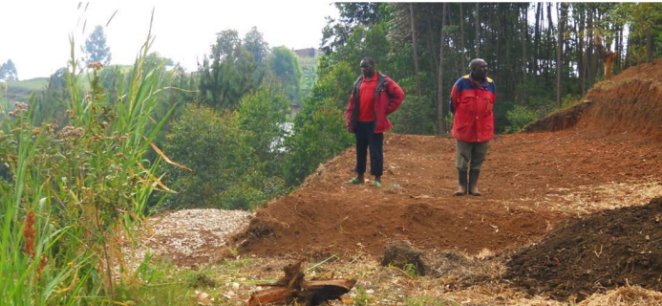Integrating Climate Adaptation in Water Catchment Planning in Uganda

Summary
The Government of Uganda is assessing climate risks and supporting the integration of climate change adaptation into water resources management at the national, sectoral and district levels, including at the catchment level. Water resources management needs to consider and address climate risks given the expected impacts of changing temperatures and rainfall patterns, and increasing extreme weather events.
This briefing note* provides an overview of the results of a climate risk assessment of water resources in the Ruhezamyenda catchment in Uganda, sets out recommendations on how to incorporate the learning into planning and implementation at the catchment level, and describes lessons for the country’s National Adaptation Plan (NAP) process. The intended audience for this briefing note is the Ministry of Water and Environment responsible for water management and climate change planning in Uganda, as well as other government and non-government actors supporting the mainstreaming of climate adaptation in catchment management plans and participating in Uganda’s NAP process.
*Download the briefing note from the right-hand column. Find an overview of the key points from the briefing below.
Introduction
Water management in Uganda is undertaken at different levels using a catchment-based approach rather than following district boundaries. The main water management functions are carried out at the regional level through four Water Management Zones that work under the central oversight and guidance of the Directorate of Water Resources Management, Ministry of Water and Environment. The aim of deconcentrated management is to move the functions closer to stakeholders and communities, which helps to focus on the real problems on the ground, improve the analytical underpinnings of projects, and provide opportunity for stakeholders to participate in the development of plans and implementation of projects (Directorate of Water Resources Management, 2017a).
Catchment management plans have been developed for 15 hotspot catchments in Uganda, funded by the Ministry of Water and Environment and development partners (Victoria Water Management Zone, 2018; Ministry of Water and Environment, 2015c, 2018). These 15 catchments are considered hotspots because of increasing population pressure, water scarcity, loss of wetlands, and soil erosion. The development of catchment management plans is based on the Uganda Catchment Management Planning Guidelines (Directorate of Water Resources Management, 2014) and overseen by Catchment Management Committees that are representative bodies with membership from various stakeholder groups including district governments, private sector, civil society and community organizations. The committees lead a collaborative process to develop, revise, and oversee the implementation of catchment management plans.
Status of Uganda’s NAP process
The Government of Uganda embarked on its NAP process by submitting its NAP roadmap to the United Nations Framework Convention on Climate Change in 2015. Uganda is clarifying its approach to the NAP process. To date, the country has pursued a hybrid approach where adaptation is simultaneously considered at the national level and in sector-specific planning.
The government launched a NAP for the agriculture sector in November 2018; and the Strategic Program for Climate Resilience: Uganda established the business cases for five priority projects to catalyze investment to build the resilience of communities, improve food security, climate-proof urban infrastructure and strengthen capacity to manage climate change (Ministry of Water and Environment, 2017). The country is developing a proposal to access funding from the Green Climate Fund for its NAP process.
Uganda’s high-level adaptation priorities are identified in the country’s Nationally Determined Contribution (NDC) and include: reducing vulnerability and addressing adaptation in agriculture and livestock, forestry, infrastructure, water, energy, health, and disaster risk management (Ministry of Water and Environment, 2015a). These priorities and actions are based on the Uganda National Climate Change Policy (Ministry of Water and Environment, 2015b) and reflect the content of Uganda Vision 2040 (Government of Uganda, 2013) and the country’s Second National Development Plan (2015/16–2019/20) (Ministry of Water and Environment, 2015c).
Recommendations for Uganda’s NAP Process
Ruhezamyenda catchment climate risk assessment determined that the Ruhezamyenda catchment is extremely vulnerable to the impacts of climate change and communities are already experiencing these impacts.
The results of the hydrological modeling indicated that the climate risks facing the catchment in the future are expected to be broad and include dealing with too much water, more variability in precipitation, more low-flow periods, and more intense rainfall that can lead to flooding and increased landslides. As such, the adaptation approach needs to include robust solutions that will work in a range of possible climate scenarios, and strike a balance between immediate and long-term needs. The approach should prioritize no- and low-regret actions, which are anticipatory adaptation actions that provide benefits regardless of future climate change and place emphasis on vulnerable areas in the catchment (Mehdi, et al., 2019).
The results of the Ruhezamyenda catchment climate risk assessment provide the following lessons for Uganda’s emerging NAP process:
- Coordinated and coherent adaptation planning and actions are required across sectors and levels of governments;
- Information sharing on adaptation, including about the NAP process, at the subnational level and between national and subnational levels can increase efficiencies and is critical to increase buy-in for adaptation action;
- Engagement of local stakeholders in the NAP process is crucial for buy-in and sustainability of adaptation interventions;
- The NAP process can help raise funding for adaptation action at the catchment level.

References
Dazé, A., Price-Kelly, H., & Rass, N. (2016). Vertical integration in National Adaptation Plan (NAP) processes: A guidance note for linking national and sub-national adaptation. Winnipeg: International Institute for Sustainable Development. Retrieved from http://napglobalnetwork.org/resource/vertical-integration-national-adaptation-plan-nap-processes/
Ministry of Water and Environment (2014). Guidelines for the Integration of Climate Change in Sector and Budgets. Kampala: Government of Uganda. Retrieved from http://ccd.go.ug/wp-content/uploads/2018/04/National-Climate-Change-Mainstreaming-Guidelines-.pdf
Ministry of Water and Environment. (2015a). Uganda’s Intended Nationally Determined Contribution. Retrieved from https://www4.unfccc.int/sites/ndcstaging/PublishedDocuments/Uganda%20First/INDC%20Uganda%20final%20%20 14%20October%20%202015.pdf
Ministry of Water and Environment (2015b). Uganda National Climate Change Policy. Kampala: Government of Uganda. Retrieved from: http://ccd.go.ug/wp-content/uploads/2018/04/National-Climate-Change-Policy-April-2015.pdf
United Nations Development Programme (UNDP). (2013). TACC Uganda – Climate profiles and climate change vulnerability assessment. Retrieved from https://www.adaptation-undp.org/resources/assessments-and-background-documents/tacc-uganda-–-climate-profiles-and-climate-change
Suggested Citation
Murphy, D. and Kitamirike, J. (2019) Integrating Climate Adaptation in Water Catchment Planning in Uganda. NAP Global Network Breifing Note. IISD: Winnipeg, Canada.
References
Dazé, A., Price-Kelly, H., & Rass, N. (2016). Vertical integration in National Adaptation Plan (NAP) processes: A guidance note for linking national and sub-national adaptation. Winnipeg: International Institute for Sustainable Development. Retrieved from http://napglobalnetwork.org/resource/vertical-integration-national-adaptation-plan-nap-processes/
Ministry of Water and Environment (2014). Guidelines for the Integration of Climate Change in Sector and Budgets. Kampala: Government of Uganda. Retrieved from http://ccd.go.ug/wp-content/uploads/2018/04/National-Climate-Change-Mainstreaming-Guidelines-.pdf
Ministry of Water and Environment. (2015a). Uganda’s Intended Nationally Determined Contribution. Retrieved from https://www4.unfccc.int/sites/ndcstaging/PublishedDocuments/Uganda%20First/INDC%20Uganda%20final%20%20 14%20October%20%202015.pdf
Ministry of Water and Environment (2015b). Uganda National Climate Change Policy. Kampala: Government of Uganda. Retrieved from: http://ccd.go.ug/wp-content/uploads/2018/04/National-Climate-Change-Policy-April-2015.pdf
United Nations Development Programme (UNDP). (2013). TACC Uganda – Climate profiles and climate change vulnerability assessment. Retrieved from https://www.adaptation-undp.org/resources/assessments-and-background-documents/tacc-uganda-–-climate-profiles-and-climate-change
(0) Comments
There is no content